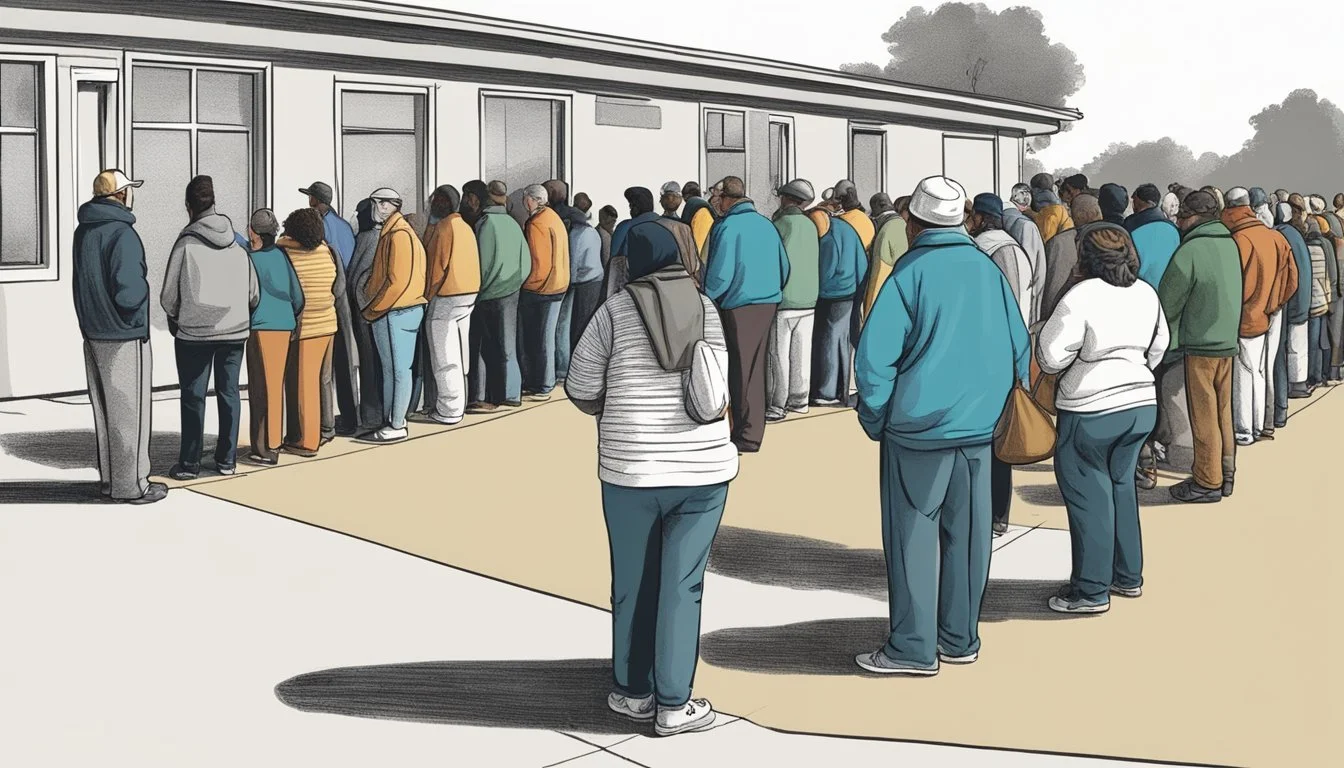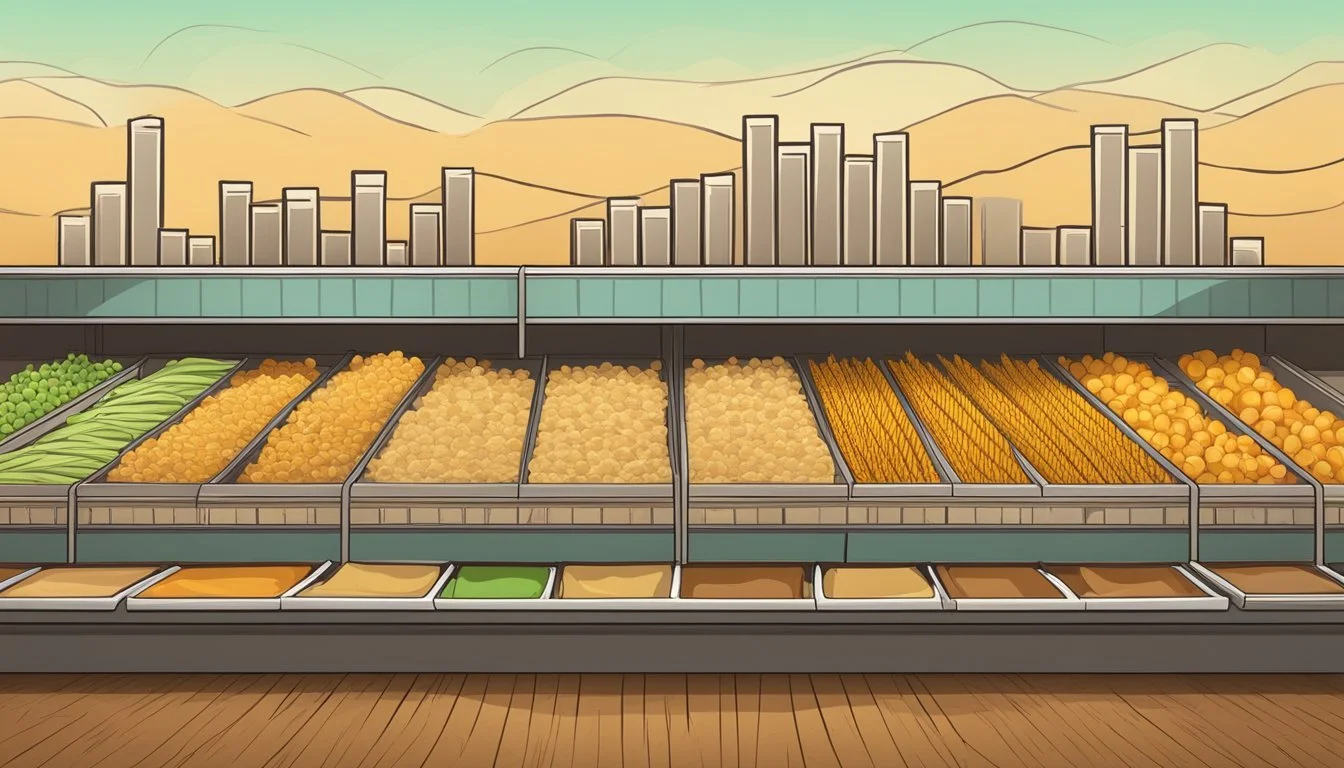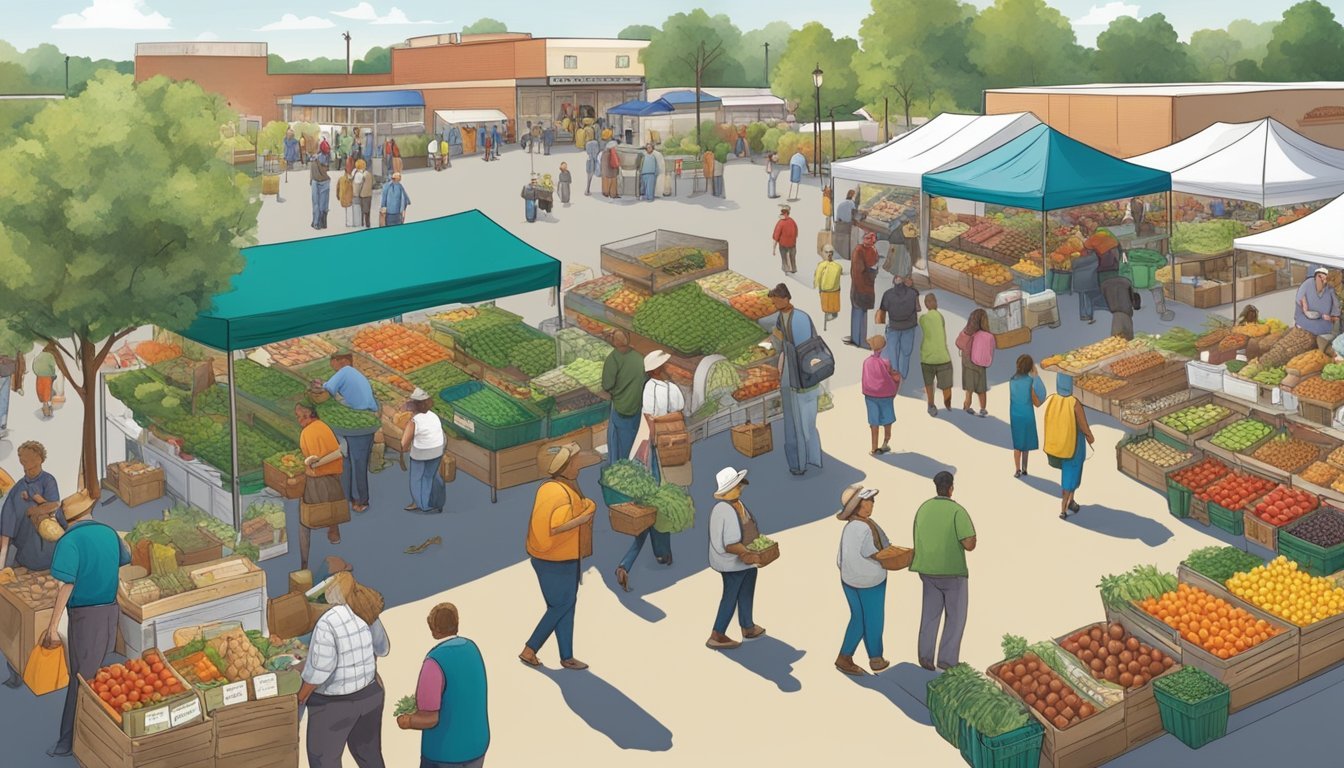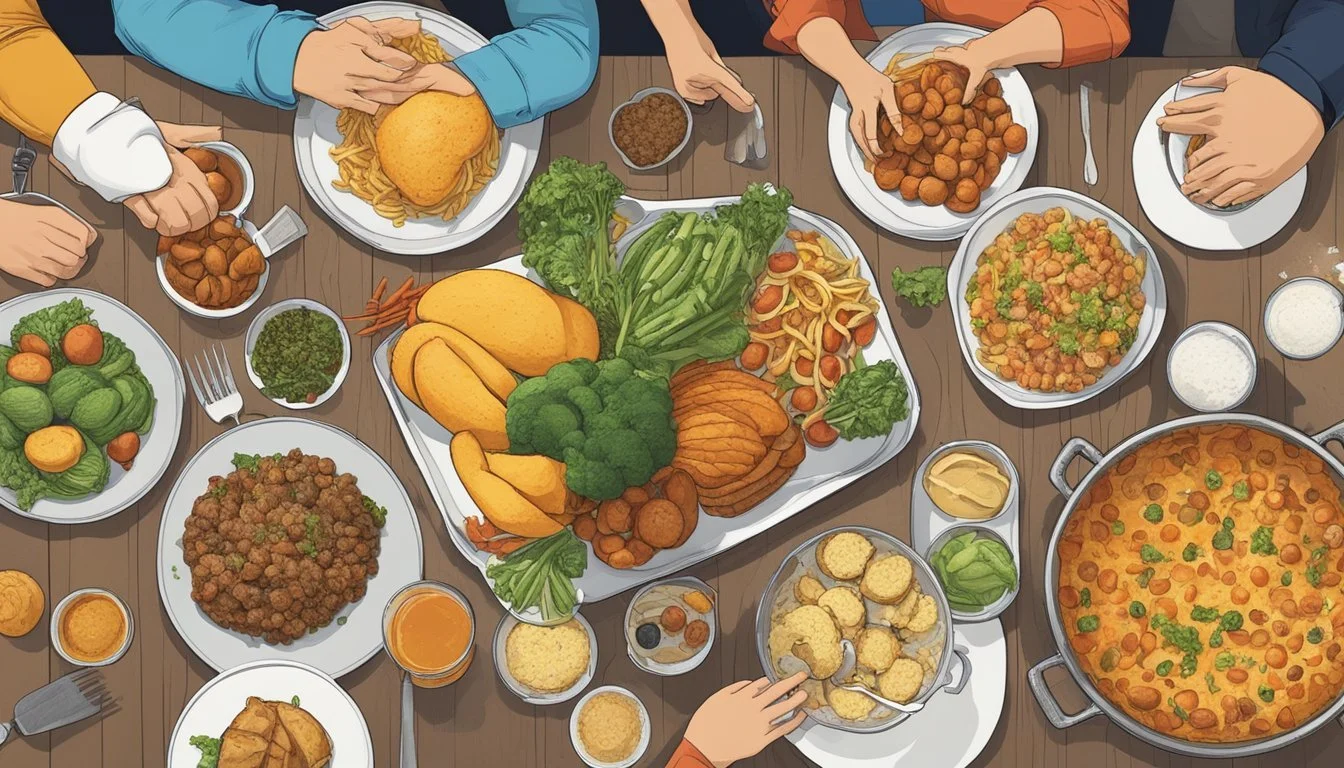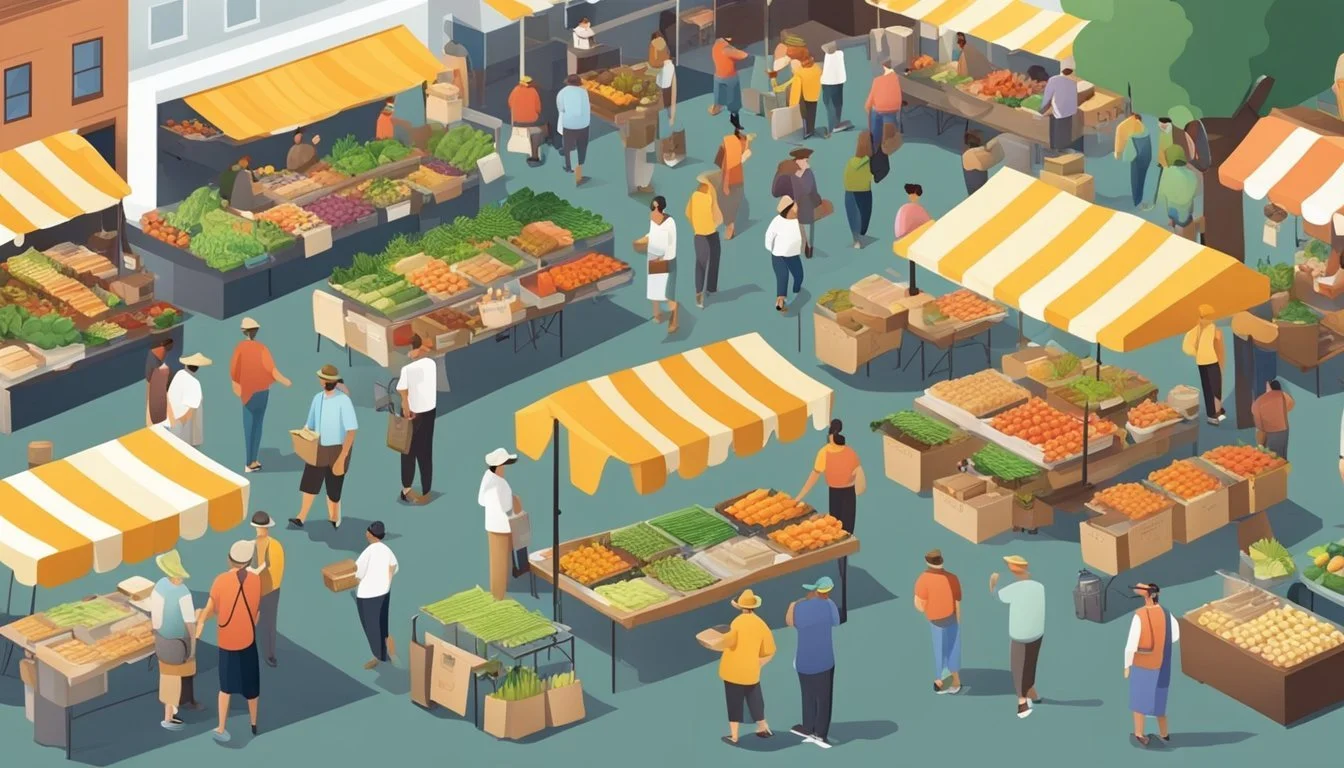Kansas Food Challenges
Exploring the State's Ultimate Eating Contests
Kansas is widely recognized for its vast prairies and agricultural prowess, but it also harbors a lesser-known challenge for those with hearty appetites: food challenges. These gastronomic feats are not for the faint of heart, inviting both local and visiting gourmands to test their eating limits. Restaurants across Kansas have devised a variety of these challenges, ranging from towering burgers to oversized pizzas, promising not just a test of one's eating capacity but also the opportunity for a memorable dining adventure.
While it may seem like an entertaining pursuit for many, the existence of food challenges casts a stark contrast to the issue of food insecurity within the state. The predicament of hunger in Kansas, as highlighted by various organizations, shows a significant portion of the population struggling with access to sufficient food. The dichotomy of these situations sheds light on the complexities and disparities within the state's food system.
Observers and participants of Kansas food challenges are often drawn to the thrill and spectacle of these culinary trials. Yet, amid the entertainment, an underlying conversation on food distribution and hunger continues. Efforts to address food insecurity in Kansas highlight the importance of a balanced food ecosystem that can both celebrate local food culture and ensure no Kansan goes hungry.
Kansas Food Challenges Overview
Kansas faces significant issues with food insecurity, reflecting in troubling statistics and the impact of food deserts on residents' access to nutritious food. Efforts through initiatives such as the Kansas Healthy Food Initiative seek to improve the situation.
Statistics on Food Insecurity
In Kansas, food insecurity rates have been a cause for concern, with data indicating that during the COVID-19 pandemic, the projected food insecurity rate rose to 15.9 percent. According to reports from Feeding America, there are notable disparities among counties, with areas like Woodson County experiencing a jump from 17.7 percent in 2018 to a projected 20.7 percent in 2020. The Kansas Food Bank has been vital in responding to these challenges, distributing substantial portions of monthly food assistance to the food-insecure population across the state.
Impact of Food Deserts on Access
Food deserts in Kansas—areas with limited access to affordable and nutritious food—compound the issue of food insecurity. They often coincide with regions of lower income and higher rates of health problems, such as obesity. The lack of grocery stores and access to fresh produce directly affects diet quality for individuals living in these areas, making the pursuit of a healthy lifestyle an uphill battle. Accessibility of nutritious food is a critical part of addressing state-wide health concerns.
Role of Kansas Healthy Food Initiative
The Kansas Healthy Food Initiative (KHFI) serves as a proactive response to food-related challenges within the state. This program aims to increase the availability of healthy food options through grants and loans that support food retailers in underserved communities. By fostering a diverse and stable food market, the KHFI plays a pivotal role in mitigating the negative effects of food deserts and boosting the wellbeing of Kansas residents.
Food Assistance Programs
Food Assistance Programs in Kansas are crucial in combating hunger and providing support to various groups, including low-income families, children, and the elderly. They operate as safety nets, ensuring that nutritional needs are met through various services.
Understanding SNAP Benefits
In Kansas, SNAP benefits play a significant role, serving as an essential resource for families in need. Also known as the Food Assistance Program in the state, it assists those transitioning from welfare, disabled individuals, the unemployed, and low-income working households. It is a part of the economic activity triggered to aid food insecurity, which has seen occasional declines in participation rates.
Local Food Pantries and Distribution
Food pantries are integral in Kansas, often stepping in when food insecurity rises. They provide a variety of food items to those in need, operating through networks like Kansas Food Bank's system, which extends across numerous counties. Studies indicate that a considerable percentage of food-insecure residents rely on pantries for monthly food supplies.
The Special Supplemental Nutrition Program for Women, Infants, and Children (WIC)
WIC is another vital program aimed at safeguarding health and nutrition for women, infants, and children. It offers targeted support to pregnant women, breastfeeding mothers, infants, and children up to age five. Through nutritional education, healthful foods, and improved access to healthcare, WIC serves as a valuable component of Kansas's food assistance landscape.
Economic Factors Affecting Food Security
The financial wellbeing of residents in Kansas is intrinsically linked to their ability to secure food. Economic pressures such as income fluctuations and high living costs directly impact food accessibility.
Effects of the Pandemic on Income and Employment
The pandemic has markedly underscored the connection between economic stability and food security. In Kansas, the projected food insecurity rate rose to 15.9 percent during the COVID-19 pandemic. Employment disruptions and income losses have been significant drivers of this trend, making it challenging for individuals to afford essentials, including food. Counties such as Woodson saw their food insecurity rates increase from 17.7 percent in 2018 to 20.7 percent in 2020 (Kansas Living Magazine), illustrating the pandemic's stark impact on the ability to meet basic needs.
Housing Costs and Budgeting for Food
In tandem with income challenges, housing costs present a another layer of economic strain that can detract from a family's food budget. Studies indicate that higher unemployment rates and lower median wages are predictive of food insecurity. The portioning out of household budgets becomes a grim task when faced with the need to cover utility bills and rent in addition to food. Families are forced to make tough decisions, often sacrificing nutritional quality for cheaper, more calorie-dense options. Economic conditions and policy decisions at both state and local levels play a crucial role in residents' food security (Focus on Policy and Economic Factors).
Health and Nutrition
In Kansas, the interplay between food insecurity and health outcomes cannot be overstated. The availability of nutritious food directly correlates with the prevalence of chronic health conditions and overall public health.
Correlation Between Hunger and Health Conditions
Individuals facing food insecurity in Kansas are at a higher risk of developing serious health conditions. Research indicates that the absence of a stable, nutritious food supply can lead to the development or exacerbation of chronic diseases. For instance, high blood pressure and diabetes are common amongst those with limited access to healthy foods. The stress of food insecurity itself can cause adverse health effects, compounding the issue.
Access to Nutritious Food and Public Health
Kansas's public health is impacted by the accessibility of healthy food options. The presence of food deserts, areas with limited access to affordable and nutritious food, contributes significantly to the rates of obesity and pre-diabetes in the region. Initiatives like the Kansas Healthy Food Initiative aim to improve access, which is a crucial step in combating public health problems. Providing easier access to healthy food can dramatically improve health outcomes across communities, reducing the incidence of diet-related diseases.
Community Initiatives and Research
Community efforts and scholarly studies in Kansas have converged to tackle the challenge of food insecurity, focusing on both practical interventions and the generation of data to inform policy.
Kansas Food Bank and Hunger Study
The Kansas Food Bank has been actively addressing food insecurity issues. According to a study they conducted, they emphasize the importance of understanding the needs of those they serve. The findings help shape the response to hunger and guide the allocation of resources. For instance, the study points out the gap in food assistance during the summer months for children, leading to strategic summer feeding programs.
University and Interdisciplinary Research
Universities in Kansas are crucial in researching food insecurity. The interdisciplinary approach combines expertise from various fields to develop comprehensive solutions. For example, the University of Missouri has an Interdisciplinary Center for Food Security that not only conducts Heartland 2021 research to assess regional food systems but also integrates findings into community-based strategies. These research initiatives provide data that support the development of policies and programs aimed at making healthy food accessible to all Kansans.
Policy and Legislation
In addressing the food system challenges in Kansas, state-level policies and legislation play crucial roles. These responses and supports are central to the state’s efforts to mitigate food insecurity and create sustainable agriculture practices.
Governmental Response to Food Challenges
The Kansas legislature has enacted policies to oversee and regulate the state’s food services, retail establishments, and agricultural practices. For instance, in 2016, the "Government Control" law was introduced to centralize state control over food and farming regulations, impacting how local entities can respond to food-related issues. This shift in governance reflects the state’s approach to handle various aspects of the food system, from safety to distribution, through state-wide standardization.
Advocacy and Legislative Support
Support for Kansas’s food system also comes from various organizations that advocate for improved policies. The Kansas Health Foundation is active in this domain, pushing for policies that promote public health and food security. Additionally, initiatives like the Kansas Food Policy Council work towards inspiring change in local food systems. These entities collaborate with state and local governments to provide expertise, develop comprehensive plans, and address food system challenges within the state.
Demographics and Specific Needs
In Kansas, certain demographic groups face distinct challenges when it comes to food security, with children, families, and senior citizens being particularly affected.
Children and Families Facing Hunger
In Kansas, 45% of food-insecure households have at least one child under the age of 18. This statistic highlights the crucial need for interventions focused on supporting families with children to ensure they have reliable access to nutritious food. The presence of working adults in these households, which stands at 50%, does not preclude them from experiencing food insecurity.
Senior Citizens and Food Accessibility
For senior citizens in Kansas, the challenges are also acute, with 37% of food-insecure households having at least one adult over the age of 65. These older adults often have specific nutritional needs and may face obstacles such as limited mobility or fixed incomes that make food accessibility a critical concern. Addressing these issues requires tailored programs that are sensitive to the unique circumstances of the aging population.
Solutions for Kansas Food Challenges
To address the food challenges in Kansas, strategized collaborations and innovative programs play pivotal roles in turning the tide against food insecurity.
Community Supported Ideas
Community efforts have proven essential in mitigating food insecurity. Neighbors participate in food distribution programs, ensuring a consistent monthly food supply to those in need. Community gardens are another grassroot solution, where locals not only partake in growing produce but also nurture community bonds. These gardens often donate a portion of their yield as free meals to food-insecure families, fostering a culture of support and sustainability within the state.
Innovative Programs Targeting Food Insecurity
Kansas has seen the implementation of several innovative programs aimed at combating food challenges. One notable initiative is the integration of agriculture with local food systems, as recognized by a grant awarded to K-State which will hopefully bolster both the economy and food security (see more). Additionally, the Kansas Health Foundation exhibits commitment to ending hunger through seeking collaborative ideas to address the root causes of food insecurity (read about their efforts). These programs strive for a future where every Kansas resident has access to nutritious food.


